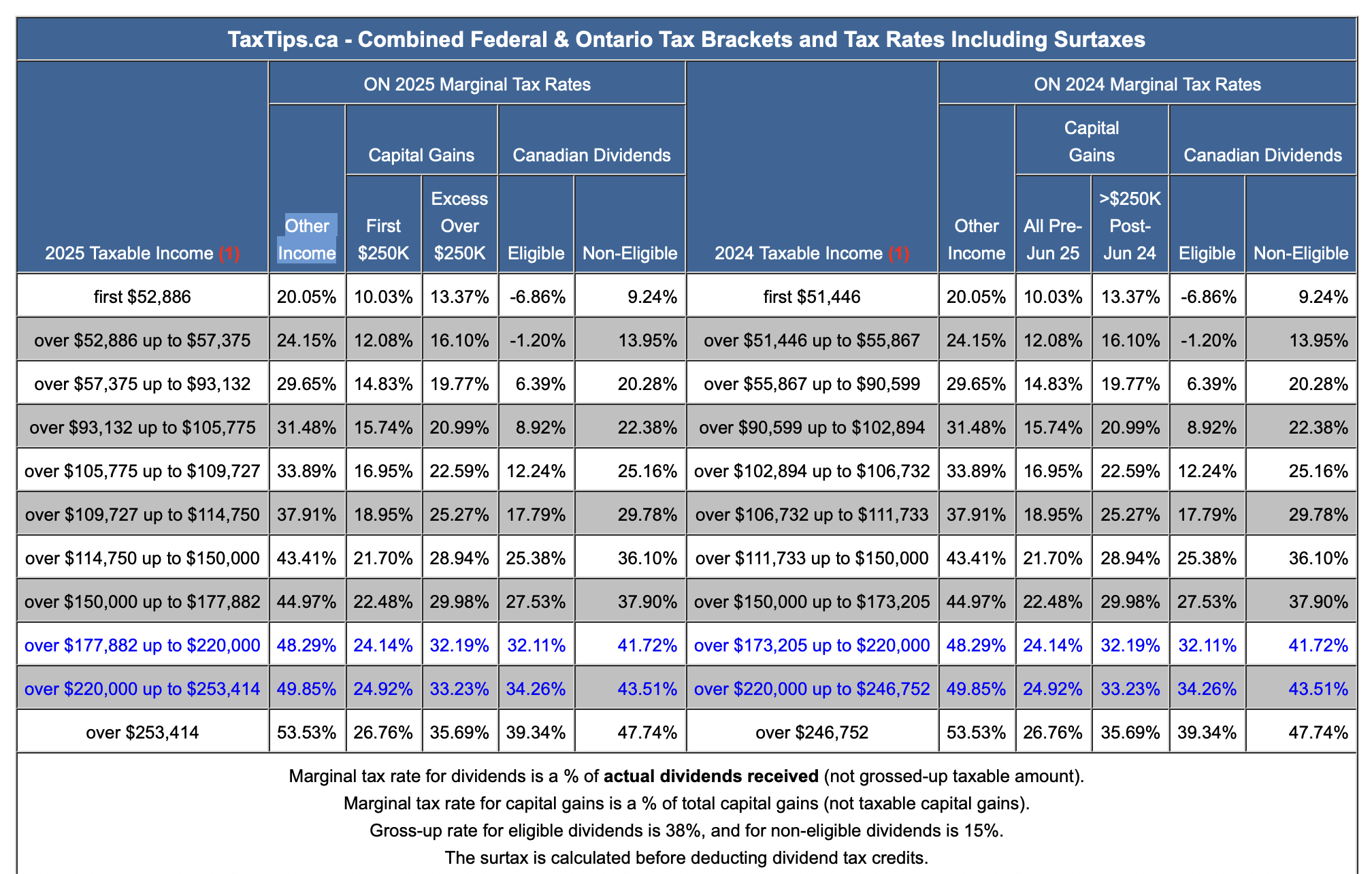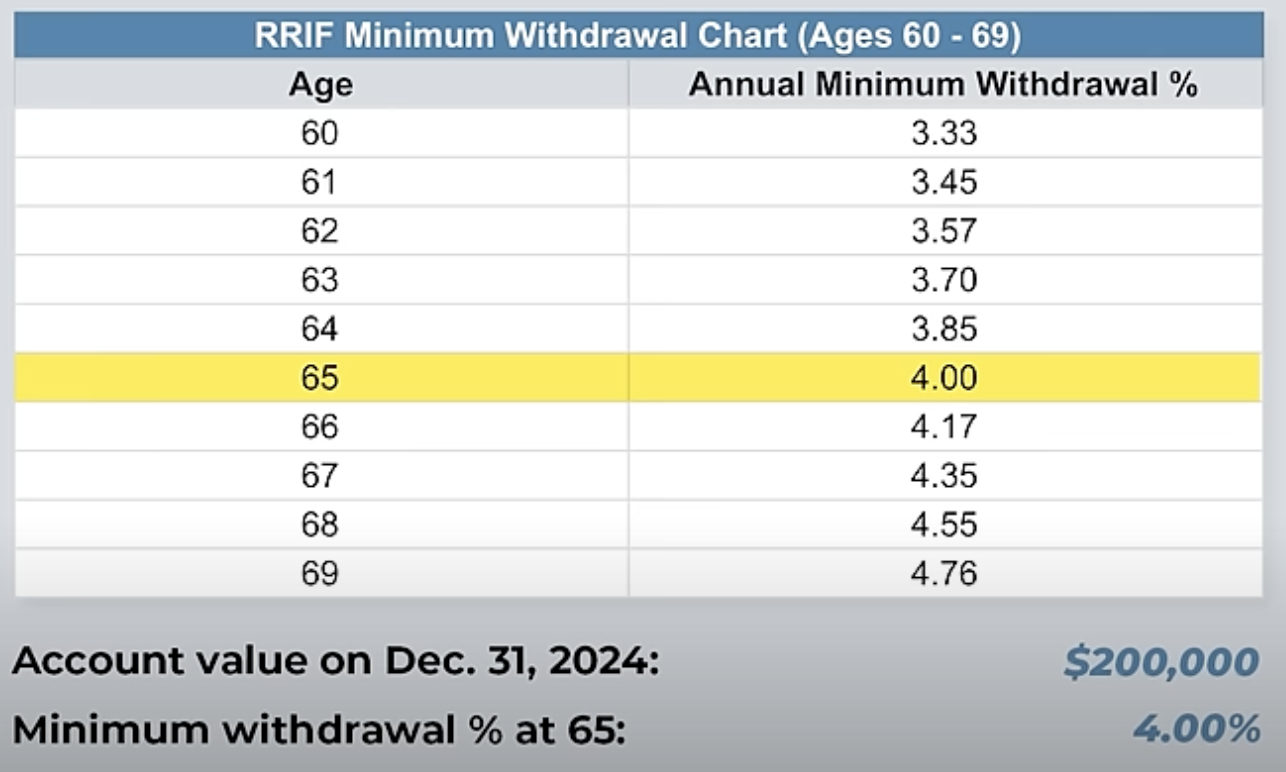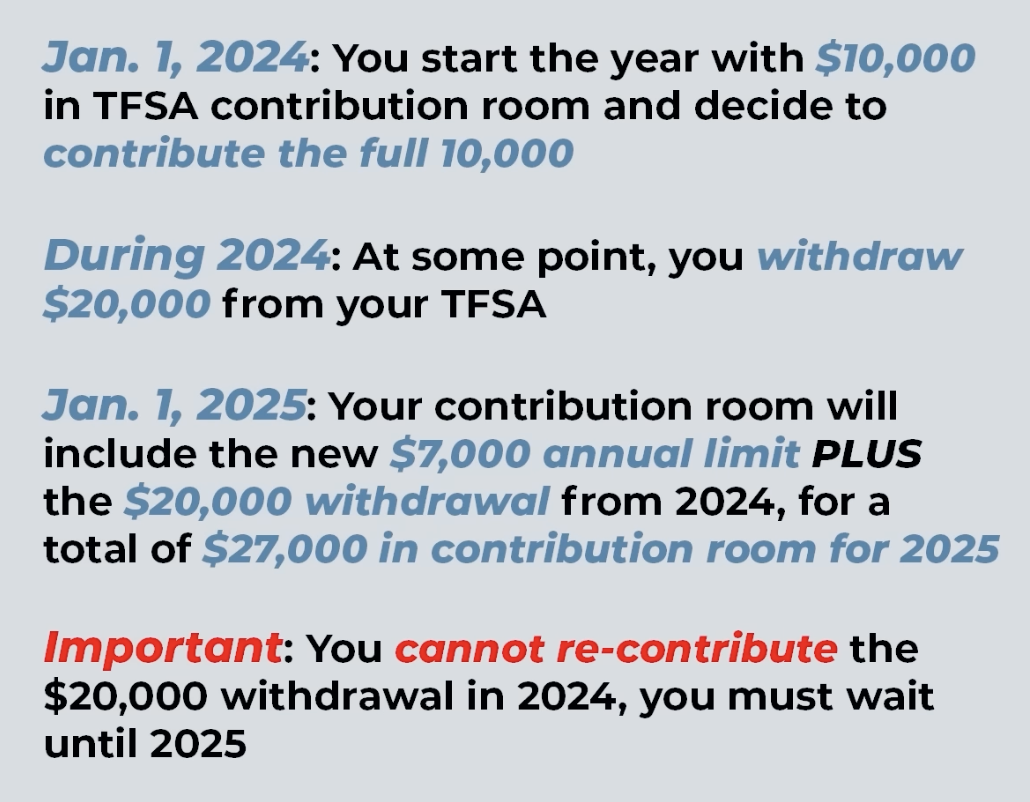Before You Retire
- Get ride of your debt.
- Don't enter into a car loan before entering into retirement. Pay cash for cars.
- Evaluate your insurance. Maybe you don't your life insurance, etc.
- Determine how you are going to pay for healthcare. Most Canadians pay these extra expenses out of pocket.
- Update your estate plan (will, power of attorney, document your digital assets(logins, etc).
- Determine your retirement age. (Will need to line up with your retirement plan!)
Tax Rates
Retirement Budget
Figure out how much you need monthly once you retired.
Having money in a TFSA will help if you have a big expense, bucket list item, etc... since they don't count as income.
Income Base on Savings
Assumptions:
- Retiring at 60
- CPP at age 70, 75% of max
- Running estate to $0 until
- From age 60 to 95
| Total Savings | 500k | 750k | 1 mil |
|---|---|---|---|
| RRSP Savings | 400k | 550k | 800k |
| TFSA Savings | 100k | 200k | 200k |
Couple Yearly Income After Tax (Adjusted for Inflation) | $57,365 | $66,480 | $74,757 |
Single Yearly Income After Tax (Adjusted for Inflation) | $37,376 | $45,290 | $53,042 |
RRIF
Earnings in a RRIF are tax-free and amounts paid out of a RRIF are taxable on receipt.
When you retire, your RRSP needs to be converted to a RRIF before the age of 71.
At 71, you will be forced to convert your RRSP to a RRIF.
At 72, you need to start withdrawing from it.
There is a minimum amount that you need to withdraw once converted to a RRIF.
It is very unlikely that you would ever just take out the minimum.
Benefits of a RRIF over RRSP
- no commissions on withdrawal
- income splitting if 65 or older
- no withholding tax on the minimum, there is a withholding tax above the minimum.
Withholding Rates
- 10% on amounts up to $5,000
- 20% on amounts over to $5,000
- 30% on amounts up to $15,000
RRSP Meltdown Strategy
The RRSP Meltdown Strategy is an aggressive drawdown of your RRSP(RRIF) early in retirement.
- Drawing down your RRSP will allow you to delay your CPP/OAC.
- Money left in your RRSP(RRIF) upon your death will be taxed as if it was income received in that one year.
- You can use your TFSA for emergencies while pulling an income from your RRSP(RRIF). ie. new roof, etc...
TFSA
- Use it as a lever account. If you need some extra money, pull it from your TFSA account.
- Over contributing to your TFSA are subject to a 1% penalty tax per month charged on the excess amount.
Withdrawal Example
Moving Abroad
- You can keep your TFSA
- As a non-resident, you won't accumulate new contribution room and you won't be able to contribute to your TFSA
References
| Reference | URL |
|---|---|
| 20 Years of Canadian Retirement Knowledge In 1hr 57mins | https://www.youtube.com/watch?v=r9Da-mb-zSw&t=1667s |
| Budget Tracker and Net Worth Tracker | https://www.parallelwealth.com/tools |


